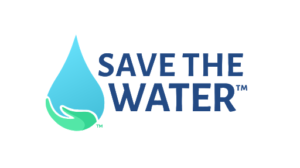By Kimberly Sung, Education Project Leader for Save the Water™ | November 3, 2016
Venice, “The Floating City,” was built in the 5th century over 118 low-lying salt marshes in the Venetian Lagoon, which is located along the northeastern shore of Italy. The city developed from a series of smaller communities that, over time, became unified through its connecting bridges and canals. Its unique geography and early dependence on water transportation made it an undeniable force in the maritime and mercantile industries through the Middle Ages. Present-day Venetians continue to depend on these historic canals in their everyday lives; however, pollution from modern development threatens the future of the lagoon, the city, and its inhabitants.
Venice’s History of Pollution
In the 1920s, nearby Marghera developed into a thriving industrial zone and port, which yielded rapid construction of factories, including chemical plants and oil refineries. This period of industrialization irreversibly changed the landscape of the lagoon and threw off the balance of its delicate ecosystem. These factories released massive quantities of unregulated waste into the lagoon for decades before strict, environmental action began in the 1980s. These pollutants included dioxins and heavy metals, which are toxic to wildlife and humans. Even though 80% of wastewater is now treated in purification plants, non-biodegradable pollutants from this era continue to plague the lagoon and have been partly responsible for the decline in native plant and animal species.1
Venice is a designated UNESCO World Heritage site that is revered across the globe for its masterful architecture and countless works of art. However, because Venice was built on an unstable foundation, it is at the mercy of subsidence; the city’s soil is slowly sinking, and with it, so is the city. Furthermore, seasonal acqua alta (abnormally high tides) flood the lowest parts of the city and are becoming more severe. In 2012, 70% of the city flooded with 59 inches of canal water, which was recorded as the the 6th highest level since records began in 1872.3 Photos of the event showed tourists blissfully swimming in the historic St. Mark’s Square, perhaps without truly understanding the level of contamination in these waters.
Water Contamination Challenges
Everyday activities also contribute to water pollution. Venice relies on a 16th-century sewage system that releases wastewater directly into its canals through underground channels called gatoli. At the time, this system was renowned for its superior hygiene because twice-a-day tides exchanged wastewater from the lagoon with clean water from the Adriatic Sea; however, this ancient system is no longer adequate for managing the sewage demands of Modern Venice. Personal care products, such as soap, detergent, and shampoo, commonly contain synthetic chemicals like fragrances that do not easily degrade in nature and do not have well-understood impacts on long-term health.5
These chemicals run freely into canals because Venice does not have a method to control its release. Although parts of the sewage system have been upgraded with sedimentation tanks to filter solid waste and septic tanks to biologically decompose contaminants, these methods are not widespread or comprehensive.4 Implementing traditional solutions for water treatment is not possible without imposing structural damage, especially around the historic center. Even if implementation was possible, water treatment plants were not originally designed to manage chemicals found in personal care products.2 Therefore, understanding the environmental fate and impact of these chemicals is essential to the future of not only Venice, but any community facing similar challenges.
The Fate of Fragrances
This month, researchers at the Ca’ Foscari University of Venice and the Institute for the Dynamics of Environmental Processes published a pioneering study on the environmental occurrence and distribution of 17 fragrance materials in surface waters around the historic center of Venice, the nearby island of Burano, and uninhabited areas of the lagoon. They chose to monitor these specific fragrance materials because they are commonly found in personal care products, are continuously produced in high volumes, and are environmentally persistent. The Italian government does not have emission limits designated for any of these fragrance materials.
Based on water samples gathered between April and December of 2015, researchers discovered that salicylates (amyl salicylate, hexyl salicylate, and benzyl salicylate), which are known oestrogenic and allergenic compounds, had the highest concentrations compared to any of the other fragrance materials tested. The researchers indicated that tidal dynamics heavily influenced the levels measured. At low tide, inner city canals exhibited concentrations of fragrance materials comparable to that of untreated wastewater. At high tide, concentrations were comparable to that of final effluent water released from treatment plants. Although the levels of these salicylates were below the minimum concentration for ecotoxicity (in Daphnia and other species), these values do not reflect possible synergistic effects with other chemicals present in the lagoon or possible long-term effects from low-level exposure.5
Venice’s Future
The results of this study open more avenues for research. The researchers state, “the main open question is to identify the environmental fate of these substances, namely whether fragrance materials degrade in the aqueous system, accumulate in sediments and biota, or volatilize into the atmosphere.”5 Further research to understand the complex pathways of all persistent chemicals in the lagoon is essential to influencing future water policy. This year’s annual Water Technology and Environmental Control Exhibition and Conference took place in Venice. By providing the backdrop of discussions on recent breakthroughs between business executives, scientists, and political figures from around the world, the city is demonstrating its evolving commitment to ensuring a safer and healthier Venice for generations to come.
References:
- Freemantle. 2000. “Safeguarding Venice.” Chemical & Engineering News. http://pubs.acs.org/cen/coverstory/7835/7835sci1.html
- Homem et. al. 2015. “Long Lasting Perfumes – A Review of Synthetic Musks in WWTPs.” Journal of Environmental Management.
- Kingtom. November 11, 2012. “Venice ‘High Water’ Floods 70% of City.” The Guardian. https://www.theguardian.com/world/2012/nov/11/venice-floods-high-water-italy
- Scibilia. 2011. “Venice Backstage. How does Venice work?” Vimeo. https://vimeo.com/21688538
- Vecchiato et al. 2016. “Fragrances As New Contaminants in the Venice Lagoon.” Science of the Total Environment.

